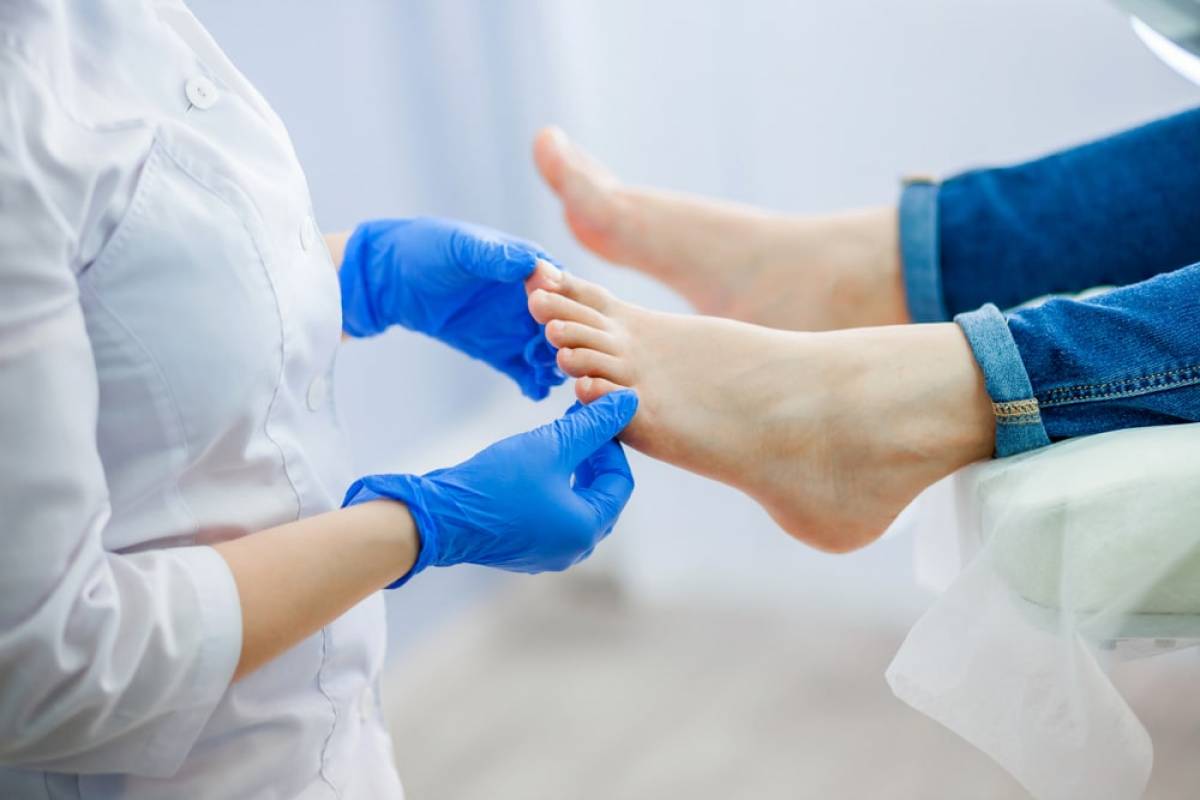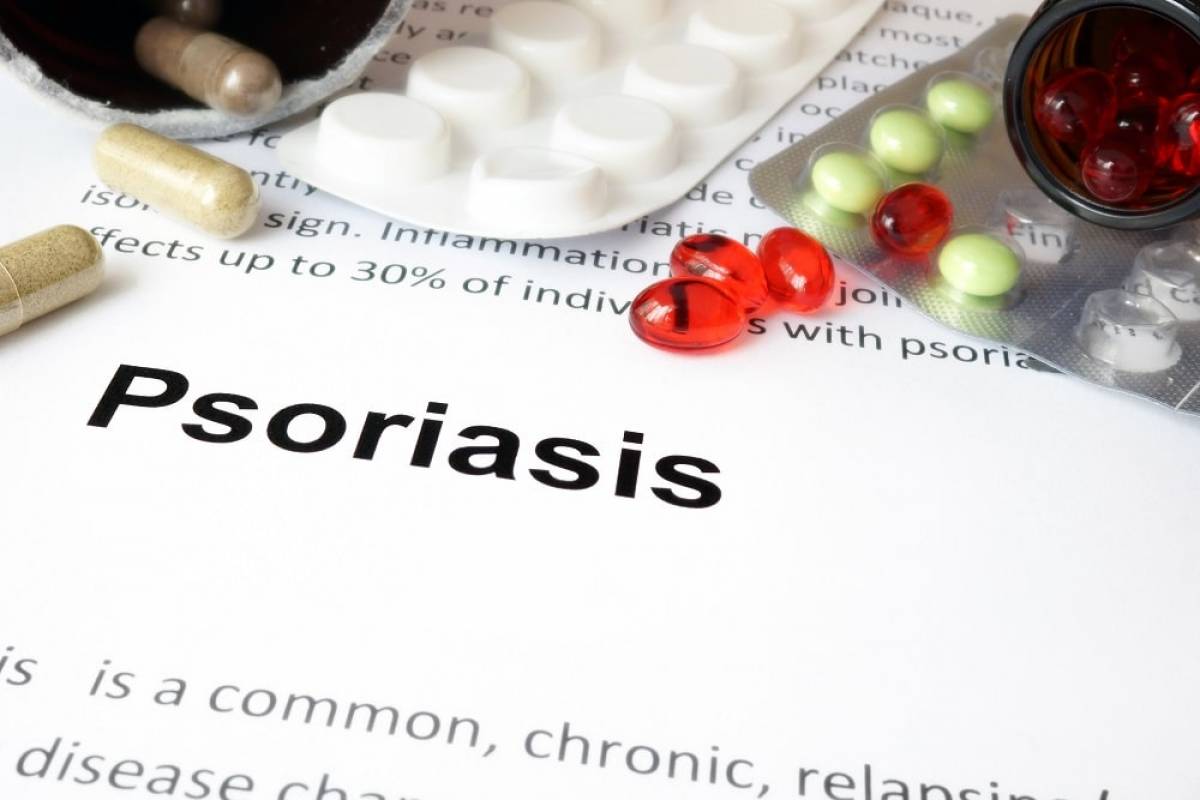
Eczema - Atopic Dermatitis: Appearance and Treatments

Treatment Duration
30
Suggested Sessions
2-4 times/year
What is Atopic Dermatitis?
Atopic Dermatitis, it's a chronic skin disease.
It occurs mainly in children, but also affects adults.
What is Eczema?
Eczema is a common inflammatory, non-contagious skin condition affecting adults and children. Although eczema is often associated with atopic dermatitis, the latter is the most common type of eczema.
The scientific name eczema could be described as a "fan" that includes a group of conditions that cause itching, irritation and inflammation in the skin.
Eczema - Atopic Dermatitis: Symptoms
The most common symptom of eczema and atopic dermatitis is the itching, which is often accompanied by an overwhelming urge to scratch.
Symptoms vary from patient to patient and may also include:
- dry skin
- skin rash
- scaly skin
- swelling
Eczema & Atopic Dermatitis: Pictures
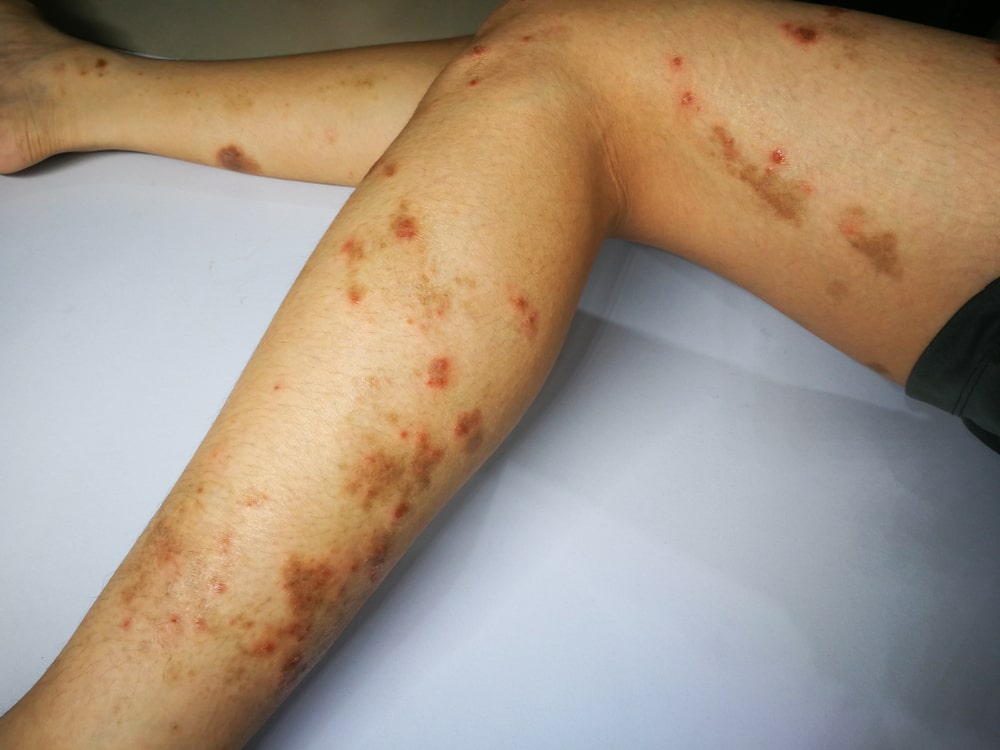
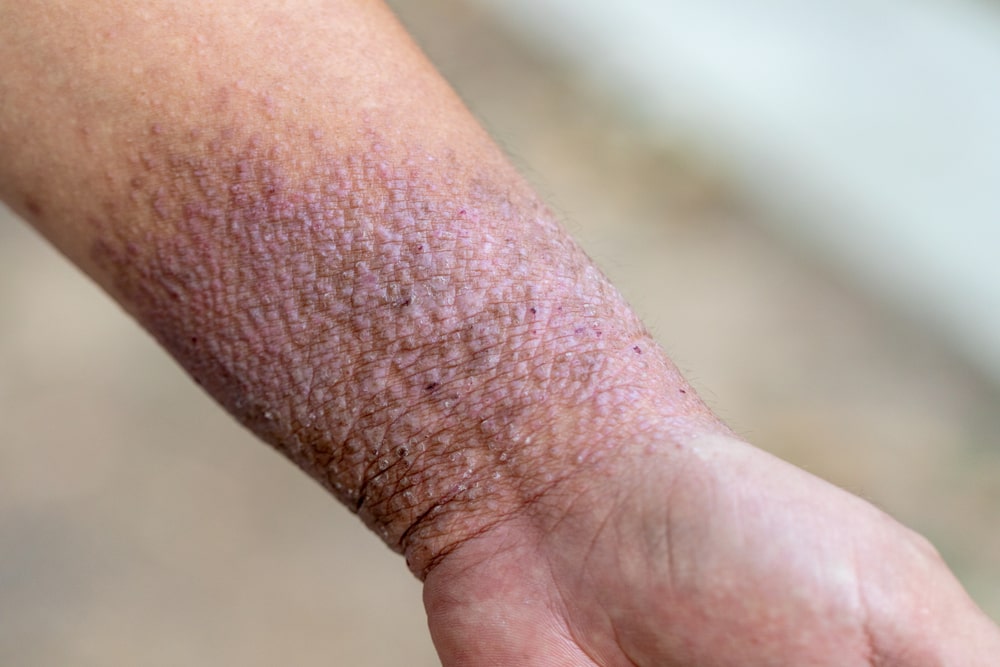
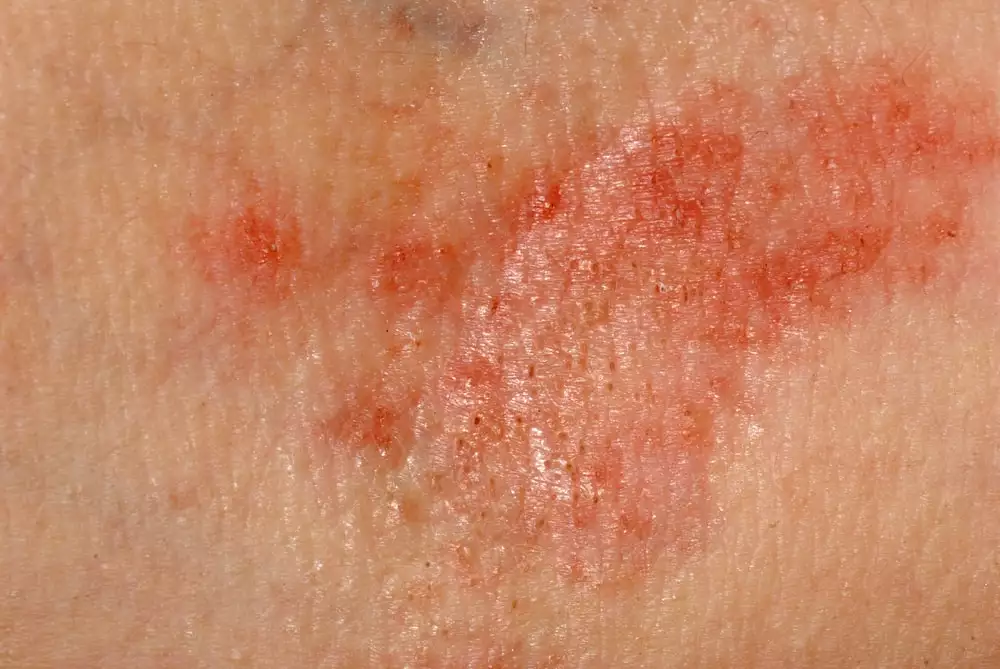

Eczema - Atopic Dermatitis: Body areas of appearance
Eczema and atopic dermatitis can appear anywhere on the body. The most common signs are:
- Hands
- Neck
- Elbows
- Ankles
- Knees
- Legs
- Face and especially the cheeks
- Ears
- Lips
Less often eczema can occur:
- On the nipples
- On the chest
- In the folds in the vulva area
- On the penis
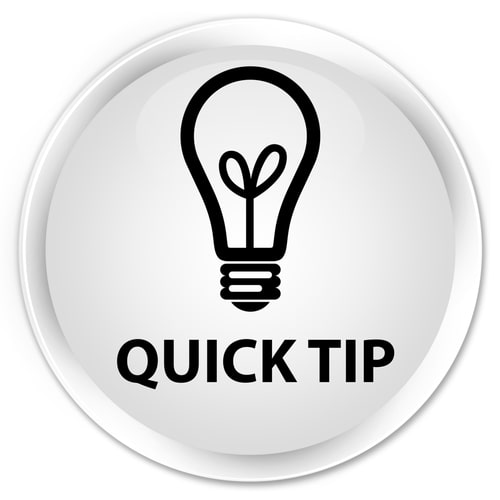 «Moisturize your skin often to avoid the appearance of atopic dermatitis lesions»
«Moisturize your skin often to avoid the appearance of atopic dermatitis lesions»
Eczema Types
There are 7 main types of eczema.
Atopic Dermatitis
Atopic dermatitis is the most common type of eczema. Millions of people of all ages around the world are faced with atopic dermatitis, or atopic eczema as it is sometimes referred to.
It occurs in people of all ages, starting in childhood (usually mild atopic dermatitis). Regardless of the site of onset, which can be anywhere on the body, atopic dermatitis is characterized by severe itching, dry skin, as well as rashes with flare-ups and recessions. People with mild atopic dermatitis may experience limited dry, itchy skin, while in more severe cases, the disease can cause widespread inflammation of the skin over the entire body and severe, long-lasting itching.
It occurs in people of all ages, starting in childhood (usually mild atopic dermatitis). Regardless of the site of onset, which can be anywhere on the body, atopic dermatitis is characterized by severe itching, dry skin, as well as rashes with flare-ups and recessions. People with mild atopic dermatitis may experience limited dry, itchy skin, while in more severe cases, the disease can cause widespread inflammation of the skin over the entire body and severe, long-lasting itching.
The causes of atopic dermatitis have not been precisely determined, but an important role seems to be played by family history, asthma, allergic rhinitis and food allergies, as well as lifestyle (environmental pollution, exposure to smoke, stress, etc.). etc)
Contact Dermatitis
More than 15,000 causes can cause this type of skin disease. Irritant dermatitis covers approximately 80% of dermatitis cases, while allergic dermatitis is the body's response to an allergen.
The first symptom caused by contact dermatitis is itching, followed by a rash or blisters, which can appear from the eyelids to the toes. The best way to treat contact dermatitis is to identify the cause of it. However, this is not always possible.
Dyshydrous Eczema
This form of eczema is characterized by small, intensely itchy blisters that usually appear on the hands and/or feet. Dyshidrotic eczema is the result of the body's sensitivity to metals such as nickel or cobalt, a drug or body care product, smoking, or a skin infection such as athlete's foot. Also, stress and weather changes can cause this specific form of eczema.
Hands Eczema
Anything that irritates the skin, even something as harmless as water itself, can cause hand eczema. This particular eczema appears with dry and cracked skin, while blisters, crusting, pus and pain, burning, itching, deep painful cracks may also occur. Effective treatment also largely depends on the cause of hand eczema.
Neurodermatitis.
Its causes seem to be linked to strong feelings of anxiety and irritation, while it is more likely to appear in a patient suffering from atopic dermatitis, contact dermatitis, very dry skin, contact dermatitis, or from some condition in the body that can lead to itching, such as kidney disease.
It usually presents with itching, which then causes a rash, creating a vicious cycle of itch-rash-itch. Neurodermatitis is located on the hand, foot, back of the neck or head, groin.
Coinoid or Discoid Eczema
Like other forms of eczema, coinic eczema causes itchy, coin-like circular rashes usually on the hands, arms and lower legs. Among the causes of discoid eczema are stress, severe dryness and injury to the skin, humidity and heat, some skin infection and excessive alcohol consumption.
Stasis Eczema
A common type of eczema, found mainly in people with poor blood flow, usually on the bottom of the legs. Its symptoms are swelling, itching, irritation and pain when standing. Stasis is the accumulation of fluid in people suffering from venous insufficiency. Treatment as well as conditions that improve health such as walking and or exercise help to deal with this particular skin disease.
Face Eczema
Eczema can appear anywhere on the body and on the face, and more specifically on the eyelids, eyes, eyebrows or chin. Facial eczema is characterized by itching, dry skin and flaking. Eczema prevents the natural epidermal barrier from functioning and protecting the skin. Depending on the cause of the eczema, treatment can be topical or oral medication.
 «The weather can affect and worsen eczema»
«The weather can affect and worsen eczema»
Eczema - Atopic Dermatitis: Causes
Several factors are involved in the development of eczema.
First of all, the immune system reacts excessively to irritants or allergenic substances in the environment.
Also, your genes seem to dictate whether or not you will develop eczema. You are likely to experience it if there is a medical history of eczema or dermatitis in the family.
The environment also harbors many irritants for the skin, such as air pollutants, exposure to smoke, harsh skin cleansers, and woolen fabrics.
Eczema flare-ups are triggered by various factors such as:
- Touching something you are allergic to.
- Fabrics (eg wool).
- Make-up or skin care products.
- Soaps and detergents.
- Dry weather.
- Smoke and atmospheric pollutants.
- Anxiety and stress.
Eczema - Atopic Dermatitis: Diagnosis
The diagnosis of eczema or atopic dermatitis by the specialist doctor, the dermatologist, is crucial for choosing the appropriate treatment.
Careful clinical examination and detailed medical history form the basis for diagnosing the type of eczema.
To confirm the diagnosis, it may also sometimes be necessary to carry out allergy tests (in the case of contact dermatitis, for example) or a skin biopsy.
A visit to the dermatologist is necessary in order to confirm eczema or atopic dermatitis, which resembles several diseases, such as psoriasis or mycosis, while many times the eczema skin diseases themselves are similar.
 «Avoid bathing in cold or hot water and don't wear woolen or synthetic clothes, because they cause the disease to flare up»
«Avoid bathing in cold or hot water and don't wear woolen or synthetic clothes, because they cause the disease to flare up»
Eczema - Atopic Dermatitis: Treatment
There is no definitive cure for eczema and atopic dermatitis. Treatment for eczema or atopic dermatitis is individualized for each patient based on severity and is aimed at relieving symptoms, healing the skin and limiting flare-ups.
The treatment that the dermatologist will recommend usually includes:
- skin moisturizing products
- cortisone creams
- anti-inflammatory antihistamines, oral corticosteroids
- phototherapy to improve skin texture and appearance
- antibiotics for possible secondary infections
- nutritional advice
 «Identifying and avoiding the agent that causes eczema is a key factor in treatment»
«Identifying and avoiding the agent that causes eczema is a key factor in treatment»
Eczema Coping Tips
Simple habits in the daily routine relieve the symptoms of eczema and prevent possible flare-ups.
More specifically:
- Moisturize your skin after bathing.
- Choose skin care products labeled fragrance-free.
- Test skin care products and cosmetics before using them.
- Take a short bath or shower with warm water.
- Prefer loose cotton underwear that allows the skin to breathe.
Eczema - Atopic Dermatitis: Myths & Truths
Myth #1
Lifestyle changes will not improve the condition of eczema - atopic dermatitis.
Truth: Lifestyle changes will go a long way along with any medication to keep the condition under control.
Myth #2
Eczema and atopic dermatitis will improve on its own
Truth: Treatment for eczema - atopic dermatitis is absolutely necessary, as irritations and scratches from scratching can damage the skin, and bacterial infections will make the condition even more painful.
Myth #3
Poor hygiene causes eczema and atopic dermatitis.
Truth: Poor hygiene can worsen eczema - atopic dermatitis. But he is not responsible for its creation.
Myth #4
Stress causes eczema - atopic dermatitis
Truth: Stress can trigger an eczema or atopic dermatitis flare-up but does not cause it.

Frequent Questions
How does eczema - atopic dermatitis go away?
With the available treatment options, eczema - atopic dermatitis subsides. But because it is a chronic disease, it can come back at any time unexpectedly.
Is eczema - atopic dermatitis contagious?
No eczema - atopic dermatitis is not a contagious disease. Note, however, that we should not scratch the rashes because there is a risk of infection.
Is eczema - atopic dermatitis an autoimmune disease?
Eczema - atopic dermatitis can cause an overreaction of the immune system. However it is not classified as an autoimmune disease.
Does atopic dermatitis increase the risk of eye diseases?
Atopic dermatitis appears to increase the risk of eye diseases such as conjunctivitis. However, early diagnosis leads to their effective treatment.
Bibliography
- https://my.clevelandclinic.org/health/diseases/9998-eczema
- https://nationaleczema.org/eczema/
- https://familydoctor.org/condition/eczema-and-atopic-dermatitis
- https://pubmed.ncbi.nlm.nih.gov/32412211/#:~:text=Use%20of%20topical%20corticosteroids%20is,corticosteroids%20as%20first%2Dline%20treatment.

